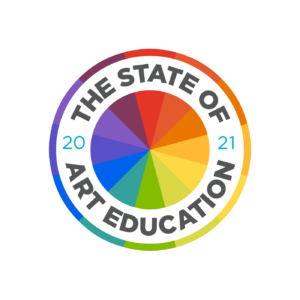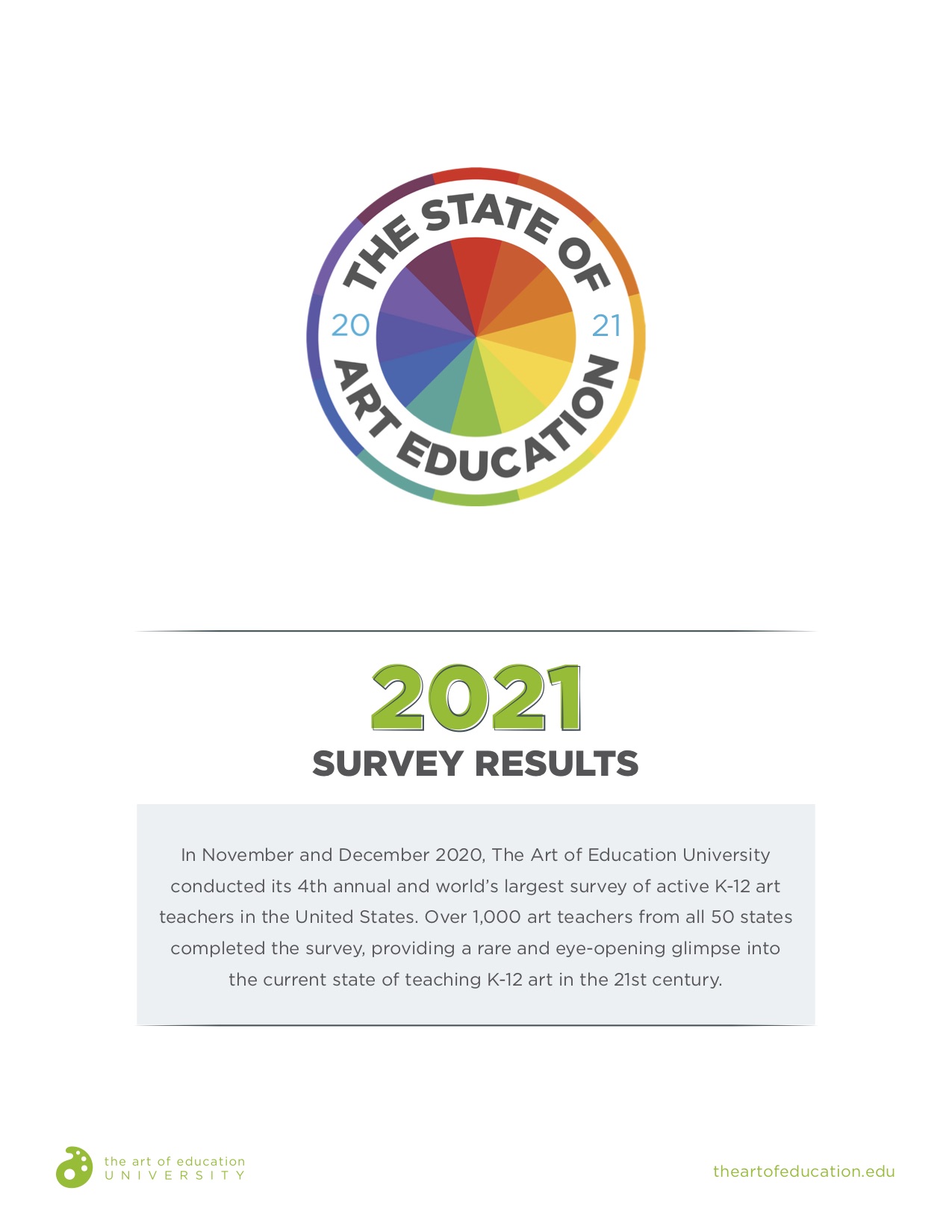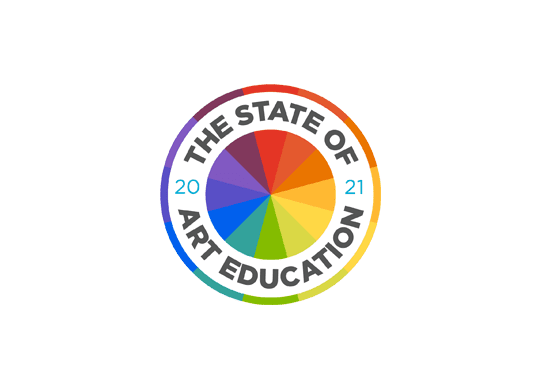
For the past three years, 2018, 2019, and 2020, AOEU has conducted and published a comprehensive “State of Art Education” survey of K-12 art educators in the United States. With thousands of responses, it is the largest and most consistent survey of its kind to date. Our goal is to share what it means to be an art teacher in the 21st century.
The past twelve months have held so many challenges. Remote/hybrid learning, school cancellations, mask-wearing, safety protocols, internet access struggles, the list is a mile long. The regular rulebook of teaching and learning has been permanently altered.
While the stress of the past year remains, overall, the survey results show what we already know—art teachers are resilient, passionate, and ready to meet the needs of students in any learning environment. Below you will find the top ten most significant takeaways from this year’s survey and how they compare to previous years.
Download the full report to gain even more insight.
1. Demographics remain consistent—mostly.

For the fourth year in a row, the survey shows most art teachers are working in a “traditional public school.” A change, however, from years past is that nearly half are in the ‘burbs. So while most teachers are working in public schools, student populations and the movement of resources are changing.
2. “A” Players are everywhere.

Art teachers bring years of experience and a wealth of information from all corners of the United States. Consistent with years past, there are many art teachers in California and Texas. Nationwide, over 60% have been teaching for more than six years, and over 52% hold an advanced degree.
3. Hybrid learning is here.

Just twelve months ago, the word “hybrid” was mainly associated with cars and gas. Given the circumstances, the survey gathered data on the current learning models art teachers are using with their students. Nearly 43% of teachers are adapting their objectives and strategies to successfully teach learners in the classroom and online simultaneously.
4. Art teachers are meeting in the middle.
 When it comes to the spectrum of choice and pedagogy in art education, there are passionate feelings. We asked teachers to rate the level of choice they provide in their classroom on a scale from 1-10. For the fourth year in a row, the average came in at a five. Art teachers continue to build in choice at levels that work for them and their students.
When it comes to the spectrum of choice and pedagogy in art education, there are passionate feelings. We asked teachers to rate the level of choice they provide in their classroom on a scale from 1-10. For the fourth year in a row, the average came in at a five. Art teachers continue to build in choice at levels that work for them and their students.
5. Priorities are clear.

While every teacher will have passion areas and areas of focus, there are clear priorities of curricular topics. The three most important curricular topics across the board are the teaching of Techniques and Processes, Social Emotional Learning, and the oldie but goodie, the Elements and Principles of Art.
6. Art teachers have control.

In a year with so much unpredictability, ironically art teachers have dominion over their corner of the universe. Nearly 70% of art teachers report having total control over what is covered with their students and having their own classrooms in which to teach. Around 20% of teachers are either working full-time or part-time from a cart.
7. There is a need for SEL and mindfulness.

Given the landscape of education, it is no wonder that nearly 50% of teachers are interested in professional growth opportunities focused on emotional awareness and mindfulness. Art teachers need it for themselves and their students.
8. We are asking for a little R-E-S-P-E-C-T.

For the past three years, “behavior management” was the clear forerunner for where art teachers felt a lack of support and struggled the most. This year is different. A “Lack of Respect for the Art Program” is the biggest struggle and where art teachers would like support.
9. Art teachers are still burning the candle at both ends.

Despite the level of intensity and changes in education, reports of “teacher burn-out” remained mostly stable from last year’s survey. The news still isn’t good. About 30% of teachers report feelings of burnout at least once a week and 14% experience burn-out daily. Ouch.
 It’s no surprise that in the midst of all that is on art teachers’ plates, there is joy to be found. Art teachers look for and find the best of their students. Nearly 76% of teachers still get the biggest joy from watching students grow in their creative abilities and in building relationships with them.
It’s no surprise that in the midst of all that is on art teachers’ plates, there is joy to be found. Art teachers look for and find the best of their students. Nearly 76% of teachers still get the biggest joy from watching students grow in their creative abilities and in building relationships with them.
While the top ten takeaways cannot possibly speak to all art teachers, they certainly show art teachers are proving their place in education on a daily and yearly basis. To everyone who participated in the survey—Thank you! Your generosity of information only makes us all stronger and better equipped to support one another for years to come.
Download Now!

Do the results surprise you?
Why is it important to hear about others’ experiences in art education?
How can you use the results to advocate for and learn from other art educators?
Read more
The State of Art Education 2020
The 2019 State of Art Education
A Look at the 2018 State of Art Education
Surveying the State of Art Education (Ep. 210)
Magazine articles and podcasts are opinions of professional education contributors and do not necessarily represent the position of the Art of Education University (AOEU) or its academic offerings. Contributors use terms in the way they are most often talked about in the scope of their educational experiences.





